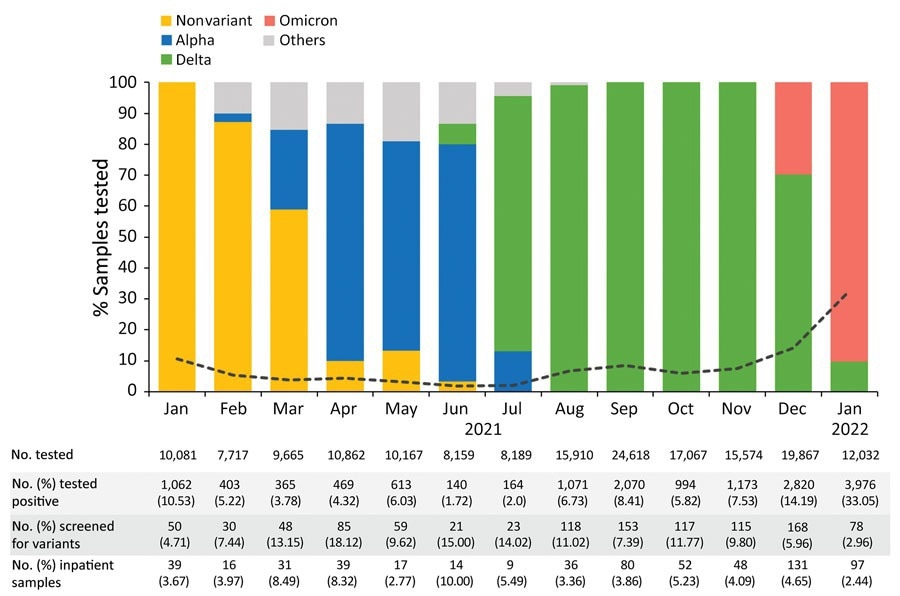The continued coronavirus illness 2019 (COVID-19) pandemic, brought on by extreme acute respiratory syndrome coronavirus-2 (SARS-CoV-2), has massively affected the worldwide healthcare sector and the financial system. Regardless of adults being primarily affected by the virus, a number of instances of extreme SARS-CoV-2 an infection in pediatric sufferers have been reported.
Research: Variations in SARS-CoV-2 Medical Manifestations and Illness Severity in Kids and Adolescents by the Infecting Variant. Picture Credit score: Morrowind/Shutterstock
Background
A broad spectrum of scientific signs, similar to asymptomatic, delicate higher respiratory misery, pneumonia, and extra extreme multisystem inflammatory syndrome in youngsters (MIS-C), have been reported in youngsters contaminated with SARS-CoV-2. As well as, it was noticed that MIS-C primarily occurred 2-6 weeks after acute SARS-CoV-2 an infection.
For the reason that starting of the pandemic, the evolution of SARS-CoV-2 occurred attributable to genomic mutations, which led to the emergence of many variants. These variants have been categorized as variants of curiosity (VOI) and variants of concern (VOC) primarily based on their virulence, capability to flee immune responses, and transmissibility in comparison with the ancestral pressure.
Within the US, the SARS-CoV-2 Alpha variant first changed the ancestral pressure, which was finally changed by the Delta variant. Then, round September 2021, the Delta pressure was changed by the Omicron variant, which turned the dominantly circulating SARS-CoV-2 pressure.
Alpha, Delta, and Omicron variants confirmed considerably larger transmissibility and disproportionately affected unvaccinated people and weak teams, similar to youngsters. These variants considerably elevated pediatric hospitalization by 5-fold to 10-fold, relying on the variant and the kid’s age. There’s a lack of information on how particular SARS-CoV-2 variants impression the scientific illness severity in adolescents and youngsters with COVID-19.
A current Rising Infectious Ailments journal research evaluated whether or not particular SARS-CoV-2 variants had been linked with completely different scientific manifestations in youngsters and adolescents.
Concerning the Research
Nasopharyngeal (NP) samples had been collected from youngsters and adolescents who examined optimistic between January 1, 2021, and January 15, 2022, by way of nucleic acid amplification assessments (NAATs).
All SARS-CoV-2 optimistic samples had been saved at −20°C; nevertheless, these had been analyzed inside per week of storage primarily based on the scientific laboratory testing functionality, cycle threshold (Ct) values, and pattern volumes. This research used Ct values as a proxy for viral load quantification. Ct worth is inversely proportional to quantitative viral load.
The samples had been analyzed to detect the presence of mutations characterizing Alpha, Beta, Gamma, Omicron, and different variants. As well as, the authors developed a T487K assay to detect the Delta variant.
The demographic traits, comorbidities, the infecting variant sort, and SARS-CoV-2 Ct values of the chosen inpatients and outpatients had been obtained. The members had been grouped primarily based on their underlying medical circumstances, together with weight problems/underweight, genetic, gastrointestinal, renal, endocrine, neurologic, immunocompromised problems, and hematologic illnesses.
Research Findings
Through the research interval, out of the 169,908 samples examined for SARS-CoV-2 an infection in youngsters and adolescents, 9.02% examined optimistic by a NAAT assay examined optimistic. Fluctuations within the month-to-month COVID-19 instances had been noticed all through the research interval.

Shifts within the circulating SARS-CoV-2 variants recognized at Nationwide Kids’s Hospital, Columbus, Ohio, USA, by share of complete instances of affected person regardless of age, January 2021–January 2022. The opposite class includes Beta (n = 12), Iota (n=9), Zeta (n=7), Eta (n=2), Epsilon (n=3), and Mu (n=2) variants, in addition to variants underneath investigation (n=2). The black dotted line represents the speed of optimistic assessments by month.
Variants screening revealed the presence of twelve SARS-CoV-2 variants, which included nonvariant pressure (11.34%), Alpha (11.81%), Delta (62.77%), and Omicron (10.49%). As well as, different SARS-CoV-2 strains, similar to Beta, Zeta, Gamma, Mu, Epsilon, and Eta, had been additionally detected. This discovering additionally revealed that Delta an infection was commonest in inpatients and outpatients. Likewise, the Alpha and Omicron variant infections had been principally present in outpatients and inpatients.
The median age of inpatients was 6.6 years, and of outpatients was 9.4 years. Apparently, each settings revealed that SARS-CoV-2 an infection was extra prevalent within the adolescent group (12–21 years of age) than in youthful youngsters. However, infants had been the second commonest group with COVID-19. The COVID-19 vaccination fee was low and didn’t differ between inpatients and outpatients.
The weight problems/obese situation was the most typical underlying comorbidity of the research cohort. SARS-CoV-2/viral coinfections had been reported in 19.82% of the research cohort. The commonest virus coinfected with COVID-19 was the rhinovirus/enterovirus (RV/EV), adopted by the respiratory syncytial virus (RSV), human metapneumovirus, endemic coronavirus, parainfluenza virus, adenovirus and influenza virus. Importantly, coinfection was present in youngsters contaminated with Delta and Omicron variants. Coinfection additionally enhanced hospital admission.
Kids contaminated with the Delta variant confirmed decrease Ct values. In distinction to the outcomes documented in present research, pediatric intensive care unit (PICU) admission was related between youngsters contaminated with Omicron and different variants.
Research Limitations
A key limitation of the research was that every one samples that examined SARS-CoV-2 optimistic by NAAT weren’t subjected to variant screening. The proportion of pattern screening for variant identification was primarily based on samples’ volumes and the provision of expert personnel on the clonal laboratory. Therefore, in the course of the months of excessive SARS-CoV-2 instances, a smaller variety of samples underwent variant testing. One other limitation was the retrospective nature of the info assortment, which influenced the findings of the outpatient cohort.

